General Plastics Design Guide
Design Guide Terms and Definitions
Bosses
Fabricated and bonded-in bosses for invisible mechanical fastening.
Draft
The taper or slope of the vertical wall of a mold that is used to facilitate the removal of the part from the mold.
The greater the draft the quicker the release and the lower the risk of part hang-up or texture scuffing.
Draw Ratio (Stretch Ratio)
The draw ratio can be described numerically if the surface area can be calculated.
The formula can be expressed as follows: Draw Ratio = Surface area of the part/footprint of the part
Draw Ratio Calculation Example: Assume a part size of 10″ x 14″ x 3″ deep
Surface area = 2(10″ x 3″) + 2(14″ x 3″) + 10″ x 14″ = 284″
Footprint = 10″ x 14″ = 140″
Draw Ratio = 284″/140″ = 2.03
If the desired ending wall thickness is 0.100, use the draw ratio value as follows: 2 x 0.100 = .200″ starting gauge. This assumes perfect material distribution and ignores any specific features on the part that can create excess thinning in an area on the part.
Parts Trays
Parts trays demonstrating nested stack functionality.
Radii
The rounded edges or curvature of the shape being dealt with. Typically, these radii are designed into the part.
Ribs
A raised or depressed area of a formed part that is designed into it to improve its structural integrity by adding rigidity to the part and/or to enhance the appearance of the design itself.
Tolerances
The maximum and minimum dimensions that are required to allow a formed part to be functional.
Undercuts
Those indentations or extrusions from a formed part that prevent the part from being removed from the mold without providing some type of movable mechanism on the mold itself.
Undercuts offer increased part strength, a locating edge, a fastening point and the ability to hide a trimmed edge.
Guidelines
These guidelines will be reviewed with the account executive and engineering staff prior to beginning the project to assure quality parts
Dimensions
All dimensions on a print should be generated from the mold side of a part.
Draft
Textured tools for female parts allow one degree of draft for every thousandth of an inch of texture depth. For male parts, allow three degrees of draft as a minimum.
Draw Ratio (Stretch Ratio)
The deeper or taller the part the heavier the starting gauge of sheet required.
Radii
The deeper the part the larger the radius or chamfer required.
Ribs
The distance between each rib or louver should be greater than or equal to its depth.
Tolerances
For molded in dimensions of parts from a machined aluminum mold use +/- .015″ for the first inch adding an additional +/- .001″ for each subsequent inch. For molded in dimensions of parts from a cast aluminum mold, use +/- .030″ for the first 16″ adding an additional +/- .001″ for each subsequent inch. Trimmed dimensions, regardless of the mold but using CNC trimming equipment, should have a general tolerance of +/- .015″. For hole diameter tolerances, use +/- .005″.
Undercuts
Keep the distance that the undercut projects into the part to a minimum.

Follow Us!